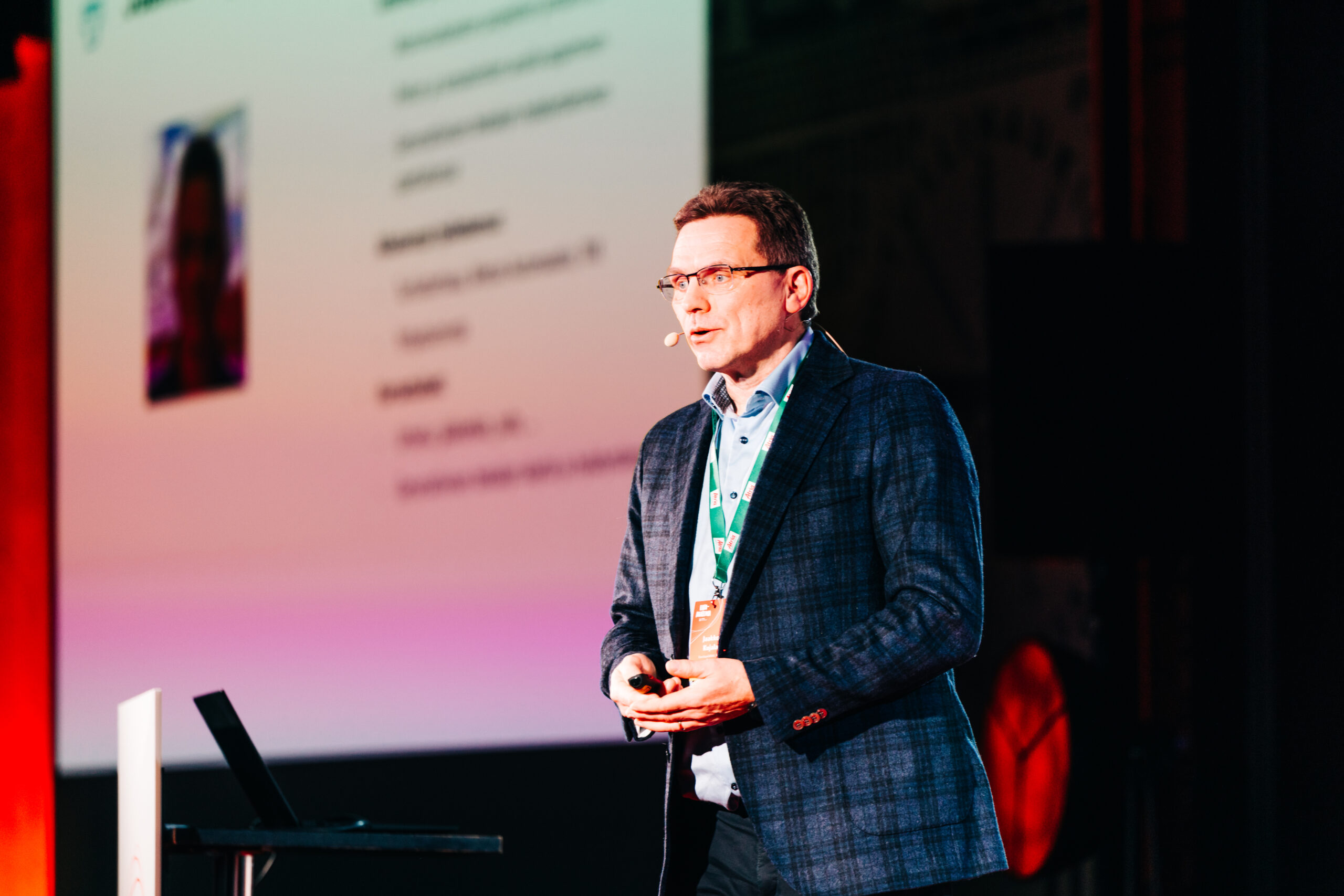
Note: This blog post was originally published in Finnish on HENRY Ry’s guest blog.
Recruitment is one of the most challenging tasks in human resources, yet also one of the most critical for an organization’s success. Finding the right talent at the right time impacts not only operational efficiency and work quality, but often directly drives business development.
However, recruitment is facing growing pressures: the number of applicants is increasing, accelerated by AI-generated applications (Kainulainen, 2025). On average, Finnish employers spend more than nine working days screening applications for a single position (Lahnajärvi, 2025) – while facing limited resources in terms of both time and personnel.
This situation can easily lead to compromises. Human evaluation is proven to be prone to biases, especially under time pressure and when managing large amounts of information. Reviewing dozens or even hundreds of applications consumes cognitive capacity and increases the risk of errors. Moreover, the assessment of a candidate’s true capabilities often relies on a narrow set of documents. At the same time, demands for transparency and fairness in recruitment are steadily rising.
In this context, generative AI has naturally emerged as an interesting, and perhaps even essential, tool. Could it help streamline the recruitment process, especially the early-stage screening, while also supporting objectivity, equality, and better hiring decisions?
Opportunities for generative AI across recruitment phases: what does research say?
Although the use of generative AI in recruitment is still relatively new, it has already attracted promising research interest. The authors reviewed academic studies on the application of generative AI at different stages of recruitment. While the research remains fragmented and early-stage, some preliminary conclusions can already be drawn.
There seems to be a general consensus that generative AI can add value across various stages of recruitment from drafting job postings to the final selection (Albassam, 2023).
Initiating the recruitment process
At the beginning of the process, generative AI can assist with practical tasks such as drafting job advertisements, adjusting language for different target audiences, and optimizing ad visibility across various channels (Aguinis et al., 2024).
For example, AI can:
- draft job descriptions,
- modify communication to be gender-neutral,
- utilize insights on terms that appeal to specific talent groups or search engine algorithms,
- identify target audiences and enhance ad targeting.
Through these measures, generative AI can accelerate reaching suitable candidates.
Screening phase
Once applications are received, generative AI can assist in the so-called screening phase. Generative AI-based solutions can analyze resumes, cover letters, employment history, and open-ended responses in relation to job requirements. The goal is not to replace human judgment, but to help HR professionals focus more deeply on candidates who meet basic criteria.
Moreover, generative AI can reduce the time spent on screening, minimize bias, and improve the consistency of shortlisting – provided that users understand how to apply AI appropriately (Abdelhay et al., 2025). Since these findings are based on survey data, however, they should be interpreted cautiously: they reflect user experiences rather than objectively measured effectiveness.
At its best, AI can thus make the process more efficient, improve the quality of screening, and help identify promising candidates who might otherwise go unnoticed. However, users must have a solid understanding of how AI models function, the internal biases they may carry, and how the quality of input data can affect outcomes.
Interview phase
During interviews, generative AI can serve as a supportive tool (Albassam, 2023). It can assist in analyzing candidate responses, transcribing and summarizing interviews, or personalizing interview questions based on prior candidate information. Additionally, AI can help interviewers by suggesting follow-up questions or highlighting inconsistencies in answers. This can increase process consistency and reduce errors caused by human memory or perception.
Generative AI-based suitability tests also offer a practical method for assessing candidates’ fit for a role. While suitability testing is not new, AI can make these tests more cost-effective compared to traditional simulations conducted during interviews. Furthermore, AI-driven solutions may provide more objective assessments, reducing the influence of human bias.
Decision-making
In the final selection stage, AI can support decision-making by summarizing candidate strengths, suggesting comparison questions, and highlighting overlooked factors based on data collected throughout the process. This helps ensure that critical information is not missed.
It is essential, however, that AI remains a supportive tool rather than replacing human decision-making. The ethicality and transparency of the final evaluation become especially important at this stage, and the ultimate responsibility should, at least for now, stay with human decision-makers.
Challenges and risks of using generative AI in recruitment
Although generative AI can enhance efficiency, promote diversity, and improve consistency in recruitment, its use does not automatically make the process better. Effective and ethical AI use requires expertise, thoughtful implementation, and adherence to regulations – including the EU AI Act’s requirements for high-risk systems.
One of the major challenges lies within the language models themselves. They may inherit biases from training data or algorithms, which can affect decisions. A well-known example is Amazon’s AI recruitment tool that discriminated against women and was eventually abandoned (Dastin, 2018). Bias can be mitigated, for example, through organization-specific training data, but a completely unbiased system does not exist.
Another critical challenge is the lack of skills and understanding. Evaluating and implementing new technologies requires technical expertise, legal knowledge, change management capabilities, and a culture of experimentation. Meanwhile, many AI tools are easy to adopt without deeper knowledge, which can lead to mistakes and misuse.
Join the HENRY webinar to discuss more
For many Finnish organizations, using AI in recruitment is still new, but interest is clearly growing. Join us to continue the conversation at a webinar organized together with HENRY ry on May 8 from 9:00 to 10:00. During the webinar, we will explore how generative AI can be utilized at different stages of the recruitment process. We will also present a practical example illustrating the use of AI in the screening phase.
Register for the webinar here.
References
Abdelhay, S., AlTalay, M. S. R., Selim, N., Altamimi, A. A., Hassan, D., Elbannany, M., & Marie, A. (2025). The impact of generative AI (ChatGPT) on recruitment efficiency and candidate quality: The mediating role of process automation level and the moderating role of organizational size. Frontiers in Human Dynamics, 6, 1487671.
Aguinis, H., Beltran, J. R., & Cope, A. (2024). How to use generative AI as a human resource management assistant. Organizational Dynamics, 53(1), 101029
Albassam, W. A. (2023). The power of artificial intelligence in recruitment: An analytical review of current AI-based recruitment strategies. International Journal of Professional Business Review: Int. J. Prof. Bus. Rev., 8(6), 4.
Dastin, J. (2018). Insight – Amazon scraps secret AI recruiting tool that showed bias against women. Reuters. https://www.reuters.com/article/world/insight-amazon-scraps-secret-ai-recruiting-tool-that-showed-bias-against-women-idUSKCN1MK0AG/
Kainulainen, J. (2025). Työnantajat hukkuvat työhakemuksiin, mutta eivät uskalla tarttua tekoälyyn rekrytoinneissa. Yle uutiset. https://yle.fi/a/74-20140449
Lahnajärvi, A. (2025). Tekoälyllä tehdyt työhakemukset lisääntyvät – Aiheuttaa harmillisen ilmiön. Tivi uutiset. https://www.tivi.fi/uutiset/tekoalylla-tehdyt-tyohakemukset-lisaantyvat-aiheuttaa-harmillisen-ilmion/6e99eef8-18e6-4203-8913-93d8c8797cbf
Authors

Jere Lehtinen, Ph.D., COO, LessonLab Oy

Perttu Dietrich, Ph.D., CEO, LessonLab Oy












